Below are short biographical sketches of selected leaders and activists who have played a role in the history of the Communist Party in Washington State: Paul Bowen,Harold Brockway, Marc Brodine, Carl Brooks, John Caughlan,Revels Cayton,Susie Revels Cayton, Howard Costigan, Hugh DeLacy,Eugene Dennett, Aaron Fislerman, Earl George,Henry "Heinie" Huff, Irene Hull, Hutchen Hutchins,Frank Jenkins, Marion Kinney, B.J. Mangoang, Lonnie Nelson, Alex Noral, William J. Pennock,Terry Pettus, Morris Raport,Anna Louise Strong, Clayton Van Lydegraf , Lowell Wakefield, Hazel Wolf
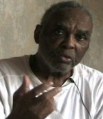 Paul Bowen was born in Chicago in 1922. He grew up in an all-black neighborhood on Chicago's South Side, the oldest of seven children. He was first introduced to the Communist Party while working in the Chicago stockyards and joined in 1943, shortly before he and his family migrated to Seattle. Bowen served in the United States Army during World War II. He worked briefly at Boeing after the war but was fired for being a Communist. A militant activist and a charismatic speaker, Bowen rose quickly through Party ranks. He was appointed Education Director of the Northwest District and also worked as Party Organizer in Duwamish Bay in the late 1940s and early 1950s. More
Paul Bowen was born in Chicago in 1922. He grew up in an all-black neighborhood on Chicago's South Side, the oldest of seven children. He was first introduced to the Communist Party while working in the Chicago stockyards and joined in 1943, shortly before he and his family migrated to Seattle. Bowen served in the United States Army during World War II. He worked briefly at Boeing after the war but was fired for being a Communist. A militant activist and a charismatic speaker, Bowen rose quickly through Party ranks. He was appointed Education Director of the Northwest District and also worked as Party Organizer in Duwamish Bay in the late 1940s and early 1950s. More
Harold Brockway was born in Canada in 1902 and moved to Whatcom County, Washington with his American-born parents while still an infant. He joined the United States Marines in 1924 and was discharged in 1928 after serving a peacekeeping stint in China. Brockway joined the Communist Party in Seattle in 1932 and was involved in the unemployed struggles of the early 1930s, serving as Secretary of Central Federation. More...
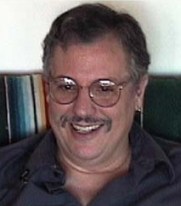 Marc Brodine was born in St. Louis in 1962, the son of social activists Virginia and Russell Brodine (link). In 1968, he moved to Seattle where he quickly became involved in party issues. In 1970, at the age of 18, he visited Cuba as part of the Venceremos Brigade. Brodine was a conscientious objector during the Vietnam War and worked in hospitals as an alternative to military service. During this time he became active in union Local 1488. He was also active in the Seattle People's Coalition for Peace and Justice, representing the Young Workers' Liberation League. In 1980, he was campaign manager for Marion Kinney in her run for the state legislature. He succeeded BJ Mangoang as chair of the Communist Party in Washington and in July, 2001 he was elected to the National Committee at the party's twenty-seventh annual convention. (See video oral history)
Marc Brodine was born in St. Louis in 1962, the son of social activists Virginia and Russell Brodine (link). In 1968, he moved to Seattle where he quickly became involved in party issues. In 1970, at the age of 18, he visited Cuba as part of the Venceremos Brigade. Brodine was a conscientious objector during the Vietnam War and worked in hospitals as an alternative to military service. During this time he became active in union Local 1488. He was also active in the Seattle People's Coalition for Peace and Justice, representing the Young Workers' Liberation League. In 1980, he was campaign manager for Marion Kinney in her run for the state legislature. He succeeded BJ Mangoang as chair of the Communist Party in Washington and in July, 2001 he was elected to the National Committee at the party's twenty-seventh annual convention. (See video oral history)
Carl Brooks was a civil rights activist, labor leader, and member of the Communist Party (CP) in the state of Washington. Born in 1908 and raised in Seattle, in 1934 Brooks replaced Revels Cayton as president of the League of Struggle for Negro Rights and during his brief tenure led a number of direct-action protests against segregated businesses in Seattle. In the mid to late 1930s, Brooks, along with several other local Communists, became active in the Washington Commonwealth Federation (WCF), a collection of labor unions and political reformists that quickly emerged as a influential left-wing caucus of the state Democratic Party. In November of 1936, Brooks campaigned on the WCF platform for the state legislature. The following year he represented the WCF in Philadelphia at the second National Negro Congress, a Popular Front effort to unite the various civil rights organizations operating at the time under a single banner. More...
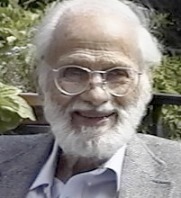 John Caughlan was instrumental in championing the civil rights of Communist Party members in a legal career spanning six decades. Born in Missouri in 1909 and raised in Seattle, he returned to the Northwest after completing a law degree at Harvard in 1935. He worked briefly for the King County Prosecutor's Office before taking a leave of absence to defend Communists during a red scare in Grays Harbor County. After representing the Grays Harbor Civil Rights Committee he was blocked from returning to his job at King County after refusing to denounce the Soviet Union. Thereafter, he went into private practice and took on some of the most celebrated cases involving Communists and unions in Washington State. More...
John Caughlan was instrumental in championing the civil rights of Communist Party members in a legal career spanning six decades. Born in Missouri in 1909 and raised in Seattle, he returned to the Northwest after completing a law degree at Harvard in 1935. He worked briefly for the King County Prosecutor's Office before taking a leave of absence to defend Communists during a red scare in Grays Harbor County. After representing the Grays Harbor Civil Rights Committee he was blocked from returning to his job at King County after refusing to denounce the Soviet Union. Thereafter, he went into private practice and took on some of the most celebrated cases involving Communists and unions in Washington State. More...
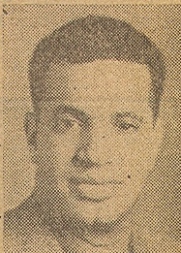 Revels Cayton was the son of a prominent African American publisher and community leader, grandson of the first African American elected to the United States Senate, and brother of noted sociologist Horace Cayton, Jr. Revels carried on the activist tradition of his family through interracial union organizing and radical politics. He joined the Northwest District of the Communist Party in 1934 after serving as secretary of the local chapter of the International Labor Defense. That same year he organized a Seattle chapter of the CP's League of Struggle for Negro Rights and campaigned for city council on the Communist Party ticket. Cayton spearheaded most of the Northwest Party's early initiatives on behalf of African American rights, including actions against segregeted businesses and a proposed legislative ban on interracial marriage, support for the Scottsboro defendants, and the Party's campaign for the freedom of accused murderer Theodore Jordan. More...
Revels Cayton was the son of a prominent African American publisher and community leader, grandson of the first African American elected to the United States Senate, and brother of noted sociologist Horace Cayton, Jr. Revels carried on the activist tradition of his family through interracial union organizing and radical politics. He joined the Northwest District of the Communist Party in 1934 after serving as secretary of the local chapter of the International Labor Defense. That same year he organized a Seattle chapter of the CP's League of Struggle for Negro Rights and campaigned for city council on the Communist Party ticket. Cayton spearheaded most of the Northwest Party's early initiatives on behalf of African American rights, including actions against segregeted businesses and a proposed legislative ban on interracial marriage, support for the Scottsboro defendants, and the Party's campaign for the freedom of accused murderer Theodore Jordan. More...
 Susie Cayton was the daughter of Hiram Revels, the first African American elected to Congress in the Reconstruction Era. She was born in 1870 and raised in Mississippi. She graduated from Rust University in that state, taught for three years and then returned to school to pursue a nursing degree. She began a long distance correspondence with Seattle newspaper editor Horace Cayton, moved to Seattle in 1896 and the two were married later that year. Until the newspaper folded in 1913, she served as associate editor of the Seattle Republican, and with her husband helped create and lead several important organizations in Seattle's black community.
More...
Susie Cayton was the daughter of Hiram Revels, the first African American elected to Congress in the Reconstruction Era. She was born in 1870 and raised in Mississippi. She graduated from Rust University in that state, taught for three years and then returned to school to pursue a nursing degree. She began a long distance correspondence with Seattle newspaper editor Horace Cayton, moved to Seattle in 1896 and the two were married later that year. Until the newspaper folded in 1913, she served as associate editor of the Seattle Republican, and with her husband helped create and lead several important organizations in Seattle's black community.
More...
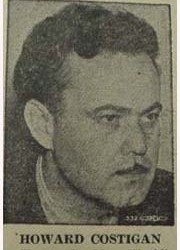 Born in 1904, Howard Costigan grew up in Seattle but graduated from Centralia High School, where he became president of the student body. He was also a member of the Centralia High debate club for three years. He said he witnessed the infamous assault on the IWW (Wobblies) Hall in Centralia by American Legionnaires on November 11, 1919, an event that shaped the direction of his life to fight for social and economic justice. He attended Whitman College and Bellingham Normal School and trained as a teacher. Costigan rose to prominence as a result of nightly and then twice-nightly political commentaries on KPCB radio. He was also the leading force in publishing the Washington Commonwealth Builder, the journal of the Washington Commonwealth Federation. In 1936, with the ban on Communist participation in the WCF lifted, he was asked to join the party. This was the era when the WCF became one of the "front" organizations of the Communist Party. More...
Born in 1904, Howard Costigan grew up in Seattle but graduated from Centralia High School, where he became president of the student body. He was also a member of the Centralia High debate club for three years. He said he witnessed the infamous assault on the IWW (Wobblies) Hall in Centralia by American Legionnaires on November 11, 1919, an event that shaped the direction of his life to fight for social and economic justice. He attended Whitman College and Bellingham Normal School and trained as a teacher. Costigan rose to prominence as a result of nightly and then twice-nightly political commentaries on KPCB radio. He was also the leading force in publishing the Washington Commonwealth Builder, the journal of the Washington Commonwealth Federation. In 1936, with the ban on Communist participation in the WCF lifted, he was asked to join the party. This was the era when the WCF became one of the "front" organizations of the Communist Party. More...
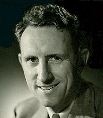 Hugh DeLacy was president of the Washington Commonwealth Federation from 1940-1945. He was born in Seattle in 1901 and worked as a marine fireman and a laborer before earning a Master's Degree in English at the University of Washington in 1932. He first gained notoriety in 1937 when he decided to campaign for the Seattle City Council. At the time DeLacy was a young English professor at the UW, but was fired by the university when he declared his candidacy. DeLacy's dismissal provoked a storm of protest among progressives and labor groups, led by the Washington Commonwealth Federation. More...
Hugh DeLacy was president of the Washington Commonwealth Federation from 1940-1945. He was born in Seattle in 1901 and worked as a marine fireman and a laborer before earning a Master's Degree in English at the University of Washington in 1932. He first gained notoriety in 1937 when he decided to campaign for the Seattle City Council. At the time DeLacy was a young English professor at the UW, but was fired by the university when he declared his candidacy. DeLacy's dismissal provoked a storm of protest among progressives and labor groups, led by the Washington Commonwealth Federation. More...
Dennett, the son of socialists who named him after socialist presidential candidate Eugene Debs, was born in Massachusetts in 1908 and raised in Oregon. He trained as a teacher and was living in Portland when he joined the Communist Party in 1931. The following year, he quit his job to become district agitprop in Seattle. Working in both Seattle and later Bellingham, he became active in the Inland Boatmen's Union and helped to recruit members for the party. As a result of a red scare arising from early inquiries of the state committee on Un-American activities set up by Senator Albert Canwell [link], Dennett was rumored to be an FBI informant, a charge he denied. During meetings with the disciplinary arm of the Communist Party, More...
A leader of the Socialist Party in Washington State before World War I, Aaron Fislerman was indicted for sedition during the war along with Hulet Wells. In 1919 he helped lead much of the Socialist Party organization into the new Communist Labor Party. Later, he served as District 12 leader from 1925 to 1928. A member of the left faction associated with the views of Leon Trotsky, he was removed as District Organizer in 1928 and later expelled from the CP.
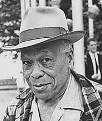 Born in Denver in 1894, Earl George served at Fort Lewis in army during WWI. Staying in Seattle he participated in 1919 General Strike and joined first the IWW and then Communist Party. In the 1930s he organized unemployed workers and worked with the Washington Commonwealth Federation and Washington Pension Union. In 1938 he took a job in a warehouse and joined ILWU local 9, the warehouse local. In 1949 he was elected president of Local 9, becoming the first African American to ever serve as president of an ILWU local. A dedicated civil rights activist, he led Communist Party and Civil Rights Congress protests against discrimination in Seattle in the 1940s and continued to fight for racial justice throughout his life. He helped organize Freedom Schools during the Seattle school boycott of 1966. An accomplished photographer his pictures appeared in the the ILWU Dispatcher and the People's World. George died in Seattle in 1985.
Born in Denver in 1894, Earl George served at Fort Lewis in army during WWI. Staying in Seattle he participated in 1919 General Strike and joined first the IWW and then Communist Party. In the 1930s he organized unemployed workers and worked with the Washington Commonwealth Federation and Washington Pension Union. In 1938 he took a job in a warehouse and joined ILWU local 9, the warehouse local. In 1949 he was elected president of Local 9, becoming the first African American to ever serve as president of an ILWU local. A dedicated civil rights activist, he led Communist Party and Civil Rights Congress protests against discrimination in Seattle in the 1940s and continued to fight for racial justice throughout his life. He helped organize Freedom Schools during the Seattle school boycott of 1966. An accomplished photographer his pictures appeared in the the ILWU Dispatcher and the People's World. George died in Seattle in 1985.
 Henry Huff was a charter member of the Communist Party in Washington State and was chairman of the party in the Northwest for 10 years. During the 1930s he helped organize unemployed workers through Unemployed Councils set up by the Communist Party. As executive secretary of the Grays Harbor Communist Party, Huff became embroiled in an ugly red scare involving the Finnish community in Aberdeen. In the 1940s he was made District Organizer for the Pacific Northwest. Along with six other leaders of the Communist Party in Washington, Huff was indicted and convicted under the Smith Act in April, 1953. The other defendants in what became known as the "Seattle Seven" were John Daschbach, William Pennock, Paul Bowen, Karly Larsen, Terry Pettus and Barbara Hartle. The case was defended by lawyer John Caughlan and won on appeal. Huff died, aged 92, in 1986.
--Gordon Black
Henry Huff was a charter member of the Communist Party in Washington State and was chairman of the party in the Northwest for 10 years. During the 1930s he helped organize unemployed workers through Unemployed Councils set up by the Communist Party. As executive secretary of the Grays Harbor Communist Party, Huff became embroiled in an ugly red scare involving the Finnish community in Aberdeen. In the 1940s he was made District Organizer for the Pacific Northwest. Along with six other leaders of the Communist Party in Washington, Huff was indicted and convicted under the Smith Act in April, 1953. The other defendants in what became known as the "Seattle Seven" were John Daschbach, William Pennock, Paul Bowen, Karly Larsen, Terry Pettus and Barbara Hartle. The case was defended by lawyer John Caughlan and won on appeal. Huff died, aged 92, in 1986.
--Gordon Black
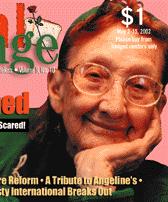 For almost 70 years, Irene Hull was a Communist Party member and one of Seattle's best known activists. Born in Kansas in 1913, Hull moved to California when she was 7. She graduated from UCLA with an education degree, but in the midst of the Great Depression, work was hard to come by. After crisscrossing the Northwest with her husband and growing family in search of work, Hull finally came to settle in Vancouver, WA where she worked as a carpenter in the shipyards. In 1942, she joined the Communist Party. Since that time she has been active in a host of progressive causes. During the infamous Canwell hearings, Hull helped organize the Congress of American Women to protest communist persecution.
More...
For almost 70 years, Irene Hull was a Communist Party member and one of Seattle's best known activists. Born in Kansas in 1913, Hull moved to California when she was 7. She graduated from UCLA with an education degree, but in the midst of the Great Depression, work was hard to come by. After crisscrossing the Northwest with her husband and growing family in search of work, Hull finally came to settle in Vancouver, WA where she worked as a carpenter in the shipyards. In 1942, she joined the Communist Party. Since that time she has been active in a host of progressive causes. During the infamous Canwell hearings, Hull helped organize the Congress of American Women to protest communist persecution.
More...
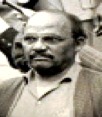 Joining the CP in the late 1920s, Hutchen R. Hutchins was tapped for leadership and sent to the Lenin School in Moscow. In 1932 he moved from New York City to Seattle to serve on a three-member District 12 Communist Party Executive Committee. That same year he helped organize one of the largest demonstrations of unemployed workers in the State's history. In 1933 he was replaced, along with the other two members of the Executive Committee, by a new Executive Secretary, Morris Raport. Hutchins stayed in Seattle and retained a Marxist political orientation, although it is unclear whether he remained an official member of the Communist Party. In the late 1930s he was president of the Negro Workers Council, an Urban League-initiated worker education program.More...
Joining the CP in the late 1920s, Hutchen R. Hutchins was tapped for leadership and sent to the Lenin School in Moscow. In 1932 he moved from New York City to Seattle to serve on a three-member District 12 Communist Party Executive Committee. That same year he helped organize one of the largest demonstrations of unemployed workers in the State's history. In 1933 he was replaced, along with the other two members of the Executive Committee, by a new Executive Secretary, Morris Raport. Hutchins stayed in Seattle and retained a Marxist political orientation, although it is unclear whether he remained an official member of the Communist Party. In the late 1930s he was president of the Negro Workers Council, an Urban League-initiated worker education program.More...
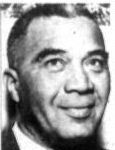 Frank Jenkins campaigned for race rights in the workplace. As an African American and Filipino labor leader he was among those who pushed for anti-discrimination language in the constitution of the International Longshoremen's and Warehousemen's Union (ILWU). Jenkins grew up in Seattle after moving from the Philippines with his Black father and Filipina mother. As a child in Seattle, he endured racial taunts at school. In the workplace, he was refused membership of the Boilermakers' Union because of his race. When the International Longshoremen's Association became among the first unions to accept members regardless of race, he joined that union. It later became the ILWU, lead by the legendary Australian, Harry Bridges.
More...
Frank Jenkins campaigned for race rights in the workplace. As an African American and Filipino labor leader he was among those who pushed for anti-discrimination language in the constitution of the International Longshoremen's and Warehousemen's Union (ILWU). Jenkins grew up in Seattle after moving from the Philippines with his Black father and Filipina mother. As a child in Seattle, he endured racial taunts at school. In the workplace, he was refused membership of the Boilermakers' Union because of his race. When the International Longshoremen's Association became among the first unions to accept members regardless of race, he joined that union. It later became the ILWU, lead by the legendary Australian, Harry Bridges.
More...
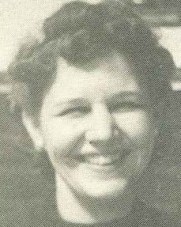 Marion Kinney was born Marion Camozzi in the small eastern Washington town of Colfax in 1912. She joined the Communist Party in 1938 and became particularly active in an organization with close ties to the Communist Party - the Committee for the Protection of the Foreign Born. She was executive secretary of the Washington branch of this group, which developed in response to legislation such as the 1940 Smith Act and the 1952 McCarran-Walter Immigration Act. Both acts were a clear attempt to curb Communist activities and target CP members and sympathizers. She was active throughout the major red scares in Washington State, including the trial under the Smith Act of seven CP members ("The Seattle Seven") and was summonsed to appear before the Committee on Un-American Activities in 1954 and 1956, but refused to testify. More...
Marion Kinney was born Marion Camozzi in the small eastern Washington town of Colfax in 1912. She joined the Communist Party in 1938 and became particularly active in an organization with close ties to the Communist Party - the Committee for the Protection of the Foreign Born. She was executive secretary of the Washington branch of this group, which developed in response to legislation such as the 1940 Smith Act and the 1952 McCarran-Walter Immigration Act. Both acts were a clear attempt to curb Communist activities and target CP members and sympathizers. She was active throughout the major red scares in Washington State, including the trial under the Smith Act of seven CP members ("The Seattle Seven") and was summonsed to appear before the Committee on Un-American Activities in 1954 and 1956, but refused to testify. More...
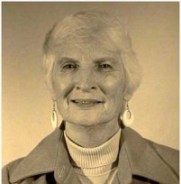 Born Baba Jean Sears in Bellevue in 1915 to an attorney father and homemaker mother, Mangaoang joined the Communist Party while studying for an MA in American Literature at the University of Washington in 1938. She quit her studies a year later to spend her time working for the party, including involvement with the front organization, Washington Commonwealth Federation. In the late forties, she first met Ernesto Mangoang, a Philippine-American union activist in the Cannery Workers' Local during a trial to deport him: they married in 1954. Ernesto died of cancer in 1968, aged 66. In the 1950s, BJ went underground. More recently, she ran for mayor of Seattle (in 1979 and 1985) and for governor of Washington in 1988. Between 1976 and 2001 she chaired the party in Washington. BJ Mangaoang died in 2007.
(see video oral history)
Born Baba Jean Sears in Bellevue in 1915 to an attorney father and homemaker mother, Mangaoang joined the Communist Party while studying for an MA in American Literature at the University of Washington in 1938. She quit her studies a year later to spend her time working for the party, including involvement with the front organization, Washington Commonwealth Federation. In the late forties, she first met Ernesto Mangoang, a Philippine-American union activist in the Cannery Workers' Local during a trial to deport him: they married in 1954. Ernesto died of cancer in 1968, aged 66. In the 1950s, BJ went underground. More recently, she ran for mayor of Seattle (in 1979 and 1985) and for governor of Washington in 1988. Between 1976 and 2001 she chaired the party in Washington. BJ Mangaoang died in 2007.
(see video oral history)
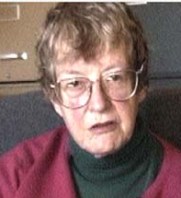 Lonnie Nelson was born in Seattle in 1932. Her father was a union longshoreman and a member of the Communist Party. During the 1930s he organized unemployed workers through the CP's Unemployed Councils, participated in the 1934 West Coast maritime strike, and helped organize striking longshoremen in New Orleans. Nelson was witness to these and other struggles and credits that experience with inspiring her own activism on behalf of working peoples in later years. As a high school student in the late 1940s Nelson joined the Young Progressives and campaigned for Henry Wallace. In 1951, she too joined the Communist Party and has remained a dedicated communist throughout her life.
More...
Lonnie Nelson was born in Seattle in 1932. Her father was a union longshoreman and a member of the Communist Party. During the 1930s he organized unemployed workers through the CP's Unemployed Councils, participated in the 1934 West Coast maritime strike, and helped organize striking longshoremen in New Orleans. Nelson was witness to these and other struggles and credits that experience with inspiring her own activism on behalf of working peoples in later years. As a high school student in the late 1940s Nelson joined the Young Progressives and campaigned for Henry Wallace. In 1951, she too joined the Communist Party and has remained a dedicated communist throughout her life.
More...
Alex Noral served briefly as District 12 Organizer, leading the CP in the Washington, Oregon, and Idaho, from 1931 to 1933. Living in Tacoma, he joined the party in 1924 and in 1928 appeared on the ballot as the Communist Party candidate for US Senate from Washington State. After leading an organizing campaign among farm workers in California he was given the District Organizer position in Seattle. But two years later, tensions with the District Executive Committee led to his replacement by Morris Raport. Returning to California, Noral helped organize the Workers Alliance in that state.
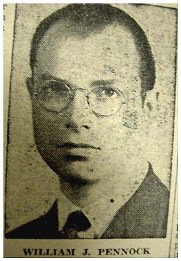 Bill Pennock joined the Communist Party in 1936 while a student at the University of Washington. From 1936-1938, he worked for the Washington Commonwealth Federation, first as a secretary and then as an elected member of the WCF executive committee. He left the WCF in December of 1938 to organize neighborhood locals for the newly incorporated Washington Old Age Pension Union, which, became the first government-funded pension program for senior citizens in the United States. Pennock was elected to the State Legislature in 1938, running as a Democrat. He would be reelected in 1940, 1942, and again 1944. From the state legislature Pennock continued to champion the Washington Pension Union
More...
Bill Pennock joined the Communist Party in 1936 while a student at the University of Washington. From 1936-1938, he worked for the Washington Commonwealth Federation, first as a secretary and then as an elected member of the WCF executive committee. He left the WCF in December of 1938 to organize neighborhood locals for the newly incorporated Washington Old Age Pension Union, which, became the first government-funded pension program for senior citizens in the United States. Pennock was elected to the State Legislature in 1938, running as a Democrat. He would be reelected in 1940, 1942, and again 1944. From the state legislature Pennock continued to champion the Washington Pension Union
More...
Terry Pettus was born in 1904 in Wisconsin and claimed to be a socialist by the time he was 16. After working as an office boy at a newspaper, Pettus entered journalism, working for various newspapers in Minnesota. He moved with his wife to the Seattle area in the late Twenties, where they joined the Cherry Street Art Colony. After a brief stint with the Seattle Star, Pettus moved to the Tacoma Ledger in 1928 and was instrumental in establishing a union agreement covering the then three Tacoma newspapers. Pettus was elected president of the Newspaper Guild, and lead a bitter 91-day strike over union recognition for the guild in Seattle. In 1938, Pettus joined the Communist Party and between 1939 and 1948 was editor of the Washington New Dealer and its successor, The New World. More...
Morris Raport came to the Northwest in 1933 to lead District 12 of the Communist Party, remaining District Organizer through the remainder of the decade, guiding the Party through its most influential period. In 1936, he was one of six people taken after a police raid on what the Argus newspaper called the "Communist College" in the Burke Building in downtown Seattle. He was released and never charged. Born in Russia and brought to the US at age 8, he was twice subject to deportation proceedings in 1930 and 1941, but never deported. In the late 1940s he moved to California and remained an active party member for the rest of his life.
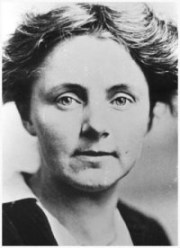 Born November 14, 1885 in the town of Friend, Nebraska, her father was a Congregationalist minister steeped in the Social Gospel and both parents instilled in Anna a firm sense of social justice. Strong attended Oberlin College, earning Bachelor’s degree in 1905, and went on to earn a PhD in philosophy from University of Chicago at the age of just 23. She went to work as a child welfare advocate for the U.S. Education Office and toured the country. By 1910 she had settled in Seattle, and was elected to the Seattle School Board, at the time the only female member, with strong support from organized labor. At the same time, she began to focus more attention on journalism, reporting on the Everett Massacre. More...
Born November 14, 1885 in the town of Friend, Nebraska, her father was a Congregationalist minister steeped in the Social Gospel and both parents instilled in Anna a firm sense of social justice. Strong attended Oberlin College, earning Bachelor’s degree in 1905, and went on to earn a PhD in philosophy from University of Chicago at the age of just 23. She went to work as a child welfare advocate for the U.S. Education Office and toured the country. By 1910 she had settled in Seattle, and was elected to the Seattle School Board, at the time the only female member, with strong support from organized labor. At the same time, she began to focus more attention on journalism, reporting on the Everett Massacre. More...
Clayton Van Lydegraf was active in a wide range of political and social movements in addition to the Communist Party in Washington State. These included the American Friends Service Committee, Anti-Fascist Front, Seattle Committee to End the War in Vietnam, Progressive Labor Party and trade unions. Van Lydegraf worked as a machinist at Boeing and was a member of the International Association of Machinists. He was expelled from the IAM Lodge 79 in 1947 for being a member of the Communist Party, along with some 40 others accused of being Communists, including the husband of Marion Kinney, Glen Kinney. More...
Lowell Wakefield was the founder and editor of the Voice of Action, the unofficial newspaper of the Northwest Communist Party from 1933-1936. A Washington State native, he briefly attended the UW, but was expelled for leading a student movement against the UW's compulsory ROTC policy. He then journeyed to the Tennessee where he became the first southern organizer of the International Labor Defense, the legal arm of the Communist Party USA. It was in this capacity that he broke the story of the Scottsboro Nine in Alabama in 1931. Wakefield's initial reports were critical in drawing the ILD and the Communist Party's attention to the case, which went on to become one of the most celebrated civil rights campaigns of the twentieth century. More...
Hazel Wolf's lifelong commitment to social and environmental justice began as a member of the Washington State Communist Party in the 1930s and 1940s. She was born in 1898 and raised in Victoria, BC before immigrating to Seattle in 1921. Wolf joined the Communist Party in 1935 while working as an organizer for the Workers Alliance, a left-wing group that represented unemployed workers and those working on WPA projects. A talented playwright, Wolf also wrote and performed for the Federal Theatre Project. When she was ousted from the FTP for being a non-citizen, she supported her family by writing, directing, and performing her own socially conscious street theatre productions. More...